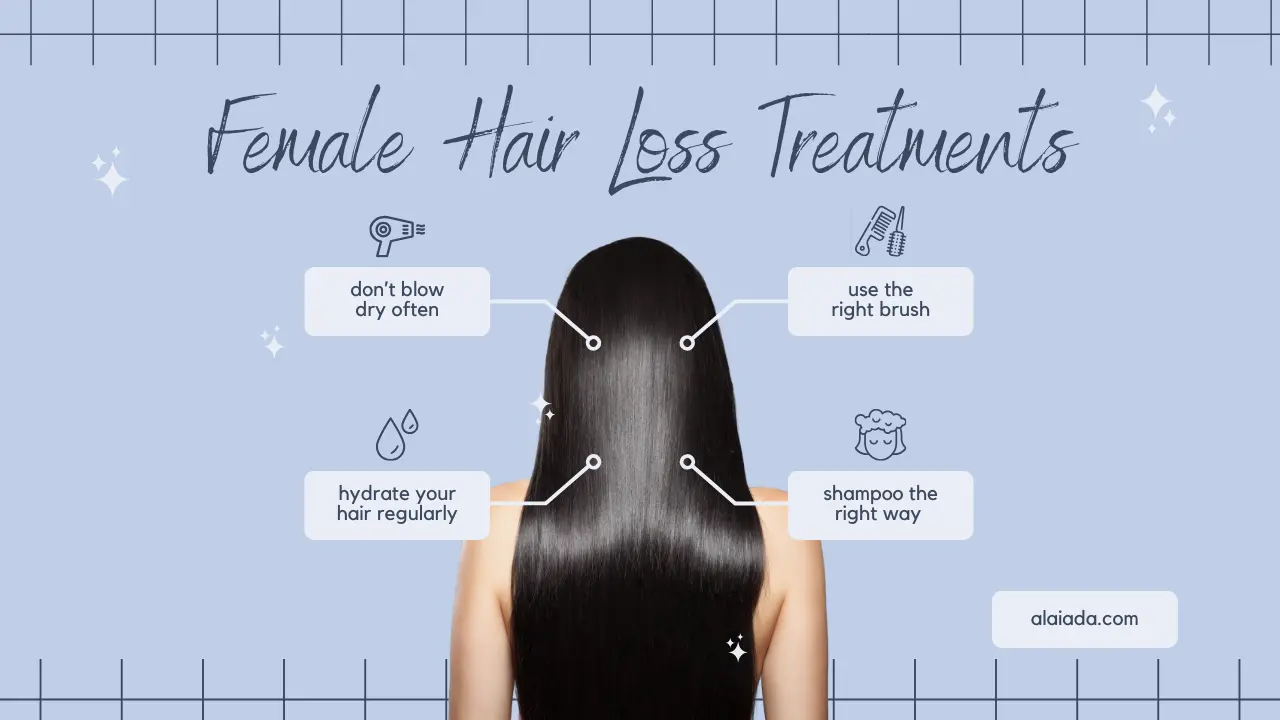Consulting the Pros: A Guide to Professional Female Hair Loss Treatments

Hair loss in women, often termed female pattern baldness, presents uniquely compared to male baldness, typically manifesting as overall thinning rather than a receding hairline. Various factors contribute to this condition, like genetics, hormonal imbalances, ageing, and stress. Understanding these causes is the initial step towards effective management and treatment.
The Importance of Professional Diagnosis
Before pursuing any female hair loss treatment, securing a diagnosis from a healthcare professional is important. Dermatologists and trichologists practice in hair and scalp issues and can offer a detailed diagnosis after thorough examinations, which may include scalp analysis, blood tests, and density checks. This comprehensive approach helps pinpoint the specific type of hair loss and the most successful treatment paths.
Hormonal Treatments: Addressing the Root Cause
For many women, hormonal imbalances are a primary factor in hair thinning. Treatments like Hormone Replacement Therapy can be effective, particularly for those undergoing menopausal changes. Medications that block androgens, such as Spironolactone, are also used to treat hormone-related loss. These options require medical prescriptions and should be discussed with healthcare providers to understand potential side effects and benefits.
Minoxidil: An FDA-Approved Topical Treatment
Minoxidil is one of the most widely recommended treatments for female hair loss. It is available over the counter in forms that are easy to apply directly to the scalp. Regular application can stimulate growth and prevent further thinning. The product is particularly noted for its success in increasing hair density and is suitable for long-term use under professional guidance.
Advanced Options: PRP Therapy
Platelet-rich plasma therapy is a cutting-edge treatment gaining traction among those seeking non-surgical solutions. This procedure involves removing a small amount of the patient’s blood, processing it to enrich the platelets, and re-injecting it into the scalp. The enriched plasma promotes healing and regrowth at the cellular level, encouraging hair’s natural growth. Sessions are typically spread over several months and are most effective when part of a continued treatment plan.
Exploring the Potential of Low-Level Laser Therapy (LLLT)
Low-level laser Therapy (LLLT) is a technologically advanced treatment option that uses medical-grade lasers to stimulate follicles and enhance strength and quality. This non-invasive treatment can be used at home with devices such as laser combs or in clinical settings with more sophisticated equipment. It is especially appealing for its ease of use and lack of side effects, making it an excellent option for ongoing maintenance.
The Role of Nutritional Supplements in Hair Health
Adequate nutrition plays a critical role in promoting robust hair. Missing essential nutrients can result in thinning and loss. Health experts typically suggest supplements rich in biotin, zinc, iron, and vitamins B12, D, and E, all vital for maintaining integrity and encouraging growth. Complementing a balanced diet with these supplements can bolster hair health and enhance the effectiveness of other hair loss treatments.
Additionally, adding foods rich in omega-3 fatty acids, such as fish and flaxseeds, can improve scalp health and provide the fatty acids necessary for maintaining lustre and strength. Regular intake of antioxidant-rich fruits and vegetables can also protect follicles against damage from environmental stressors, promoting a healthier growth cycle.
Surgical Options: When Other Treatments Don’t Suffice
When non-surgical methods fail to halt hair loss, transplant surgery becomes a viable option. This surgical technique redistributes follicles from denser areas to those where thinning is noticeable, providing a long-term remedy for hair loss. Such delicate procedures must be performed by experienced surgeons specialising in hair restoration to guarantee both safety and the desired aesthetic outcomes. Proper post-operative care is also essential to support successful healing and optimise the growth of transplanted follicles.
Furthermore, advancements in surgical techniques, such as Follicular Unit Extraction and Follicular Unit Transplantation, offer options that reduce scarring and enhance recovery, deciding to pursue surgery as a more appealing choice for those looking for practical solutions.
When to Seek Professional Help
Consulting with a professional at early signs of thinning can significantly enhance the success of managing and treating the issue. Delaying until it becomes severe may reduce the efficacy of available treatments. Early intervention is crucial; consulting a specialist can offer significant insights and customised treatment strategies.
These specialists can also identify potential underlying health issues contributing to the problem, such as hormonal imbalances or nutritional deficiencies. Engaging with experts early ensures comprehensive care and access to the latest treatment innovations, giving individuals the best chance to restore their hair health efficiently.
From topical treatments like Minoxidil to advanced options like PRP therapy or even surgical solutions, there are numerous paths to explore. Each woman’s journey is unique, and a female hair loss treatment should be as personalised as possible. Consulting with specialists who understand the nuances of female hair loss ensures that individuals receive the most effective, customised care.











